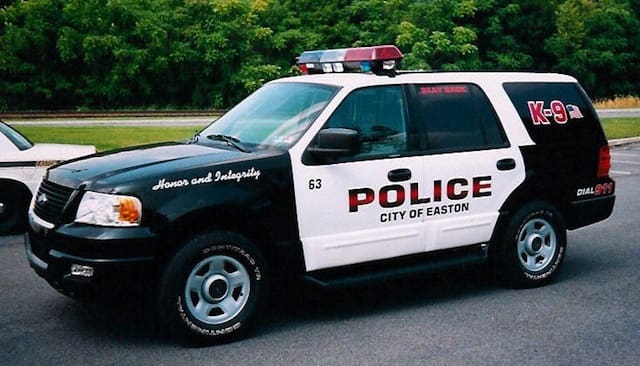
Here’s an excerpt from a court case listed on leagle.com involving an insurance claim. I can’t make head or tails of who’s suing whom for what or why the judges said it was OK or not OK. But I can see how gun safety can be easily ignored, with entirely predictable consequences.
The following facts were pled in the underlying action. On March 25, 2005, Jesse Sollman (“Officer Sollman”) was a member of the City of Easton Police Department’s SWAT team. Following a SWAT team exercise on that date, members of the team returned to police headquarters and began unloading and cleaning the weapons used during the exercise. Officer Sollman along with fellow SWAT team members Renninger and Weber performed these tasks in a secondary weapons cleaning room. After cleaning his weapon, Renninger proceeded to the locker room where he reloaded his weapon. Upon noticing a mark on the weapon, Renninger returned to the secondary cleaning room with the loaded weapon. Renninger placed the safety on, cleaned the slide portion of the weapon to remove the spot, and then removed the safety and turned to exit the room. In the process of turning, Renninger’s weapon discharged, firing a bullet that fatally wounded Officer Sollman.
So whose fault is that, then? As we’ve said here many times, gun safety is everyone’s responsibility. A chain is only as strong as its weakest link. In this case, it seems that the chain was made of weak links . . .
The amended complaint further alleges a number of practices of the Easton Police Department that may have contributed to the shooting incident including: that there were previous incidents of accidental or negligent weapons handling and/or discharge; that the police department did not provide any training pertaining to the transport of weapons, loading and unloading of weapons, or cleaning of weapons within police headquarters; that officers routinely loaded and unloaded weapons without using sand safety barrels and were not penalized; and that no written policies existed regarding the transportation, cleaning, loading and unloading, use of a safety, or holstering of weapons in police headquarters.
The police are in charge of enforcing gun safety laws. They should—must—lead by example.




Robert: Here's what happened. Sollman's widow sued the department, which of course was a sub-entity of the City of Easton (so, in fact, she actually sued the City of Easton, PA.)
Easton had a liability insurance policy with Scottsdale Insurance. One of the provisions of the policy was that while the policy covered a lot of liability issues, it did not cover employees who were injured in the performance of their duties (because that's what workers compensation is for.) Put more simply, if the officer's weapon had discharged through negligence and struck a civilian who happened to be standing in the police station, Scottsdale would have been on the hook to pay for the civilian's damages. But because the victim was a police officer who was performing his duties, his injuries fall under workers' comp.
When Scottsdale found out the circumstances of the incident, they filed a motion for summary judgment (judgment as a matter of law) that they were not liable to Easton because the incident arose out of the course of Sollman's employment and was therefore excluded under the policy.
The district court (trial court) denied their motion (apparently because, among other things, Sollman's widow filed a civil rights complaint against the city. I guess she alleged that the Police Department's negligent training/supervision acted to deprive her late husband of his civil rights.)
So Scottsdale appealed and argued that because the civil rights complaint was really just a sub-set of the work-related injury, it, too, was barred under the policy. The appellate court agreed and reversed the district court, directing them to enter a declaratory judgment that Scottsdale is not liable to Easton because the injury was related to Sollman's employment and thus excluded under the express terms of the policy.
Now that Scottsdale is out of the picture, the suit can proceed against Easton and Sollman's widow can try to collect from Easton's workers' compensation carrier, or from the city itself if they are self-insured for workers' comp. She can also sue the officer whose weapon discharged, killing Sollman, and depending on the law, the State of PA may or may not be on the hook to defend him.
BTW, I agree with you completely. Not only was the officer who shot Sollman a cop, he was a SWAT team memeber, IOW, he was a part of a team that is supposed to be at a level above the ordinary officer in terms of weapons-handling abilities. That he was so careless and negligent with his weapon reflects very poorly on the Easton Police Department and on their training and supervision.
When I was in the military, it was common to punish soldiers who negligently discharged their weapons into the clearing barrel. Weapons safety is not a joke and those who carry weapons professionally have a duty (to the public and to their fellow officers) to be competent and knowledgeable about weapons safety.
Comments are closed.